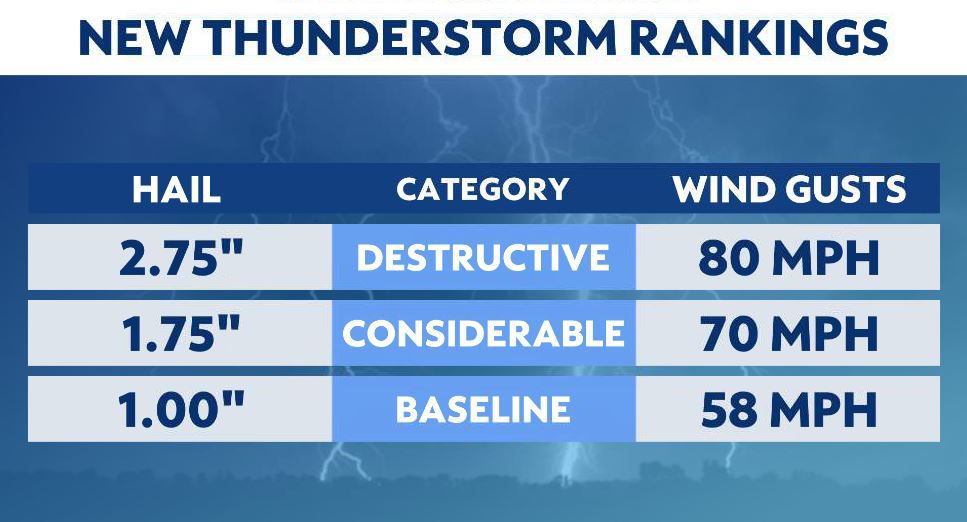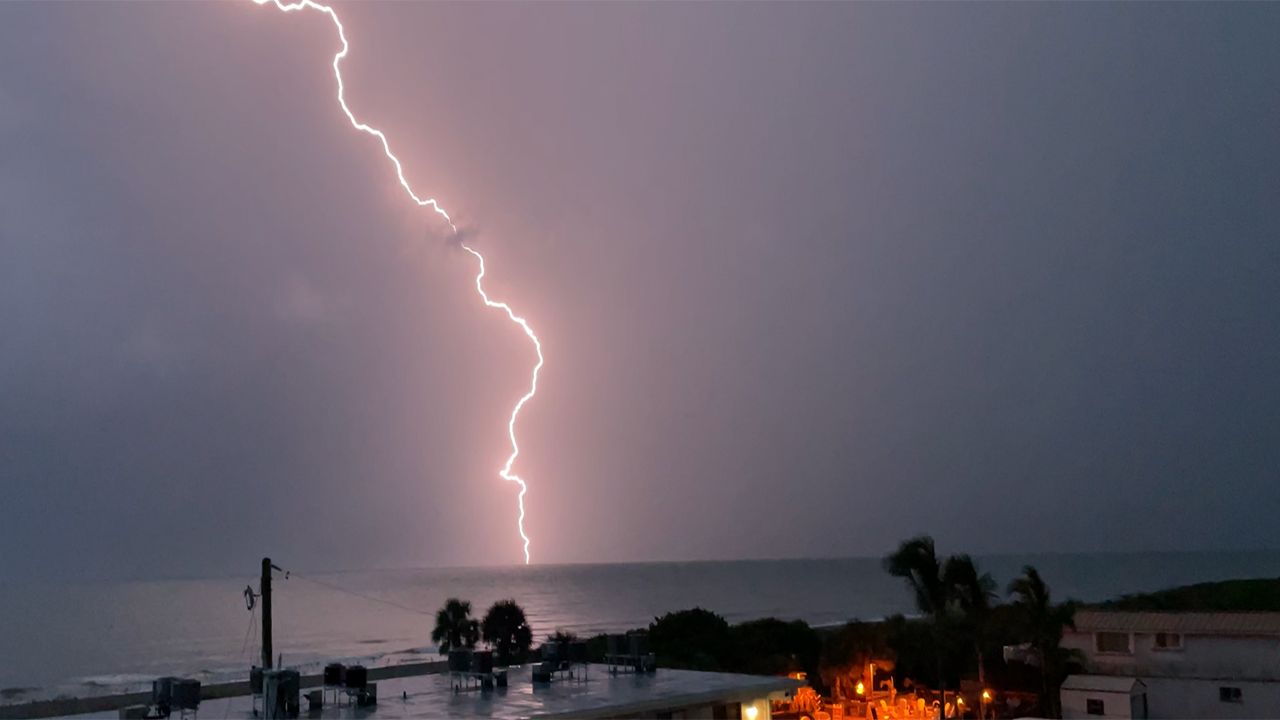No two severe storms are the same, and the National Weather Service (NWS) released new threat levels for severe thunderstorms. The update will begin on August 2.
The NWS will divide Severe Thunderstorm Warnings into three categories of damage threat: destructive, considerable and baseline.
The highest new threat level is 'destructive.' This category is when a severe thunderstorm is capable of, or producing, at least 2.75-inch diameter (baseball-sized) hail and/or wind gusts of at least 80 mph.
These warnings will automatically send a Wireless Emergency Alert (WEA) to all enabled mobile devices in the warned area, something that was previously only done for Flash Flood Warnings with 'considerable' or 'catastrophic' damage expected, as well as all Tornado Warnings.
However, do not plan on this level of Severe Thunderstorm Warning happening often. On average, only about 10% of all severe thunderstorms across the country reach this highest-level threat each year.
Most often, these will be supercell storms that drop very large hail, or especially powerful wind events such as derechos.
The goal is to get the public to urgently act when a life-threatening storm is in their area. These storms will most likely cause the greatest or costliest damage.

The next category is a 'considerable' damage threat.
This category states that a severe thunderstorm is capable of, or producing, at least 1.75-inch diameter (golf ball-sized) hail and/or wind gusts of 70 mph or more.
These, and the next category down, will not be WEA-activated on your phone.
The final category for a severe thunderstorm is baseline, which remains unchanged, with at least a hail an inch in diameter (quarter-sized) and/or wind gusts over 58 mph.
The National Weather Service will continue to issue and distribute all Severe Thunderstorm Warnings the same way, and they will all still be called Severe Thunderstorm Warnings.
Make sure you and your family have multiple ways to receive weather alerts and stay up-to-date on your smartphone with the latest local forecast by downloading our Spectrum News 1 app.



